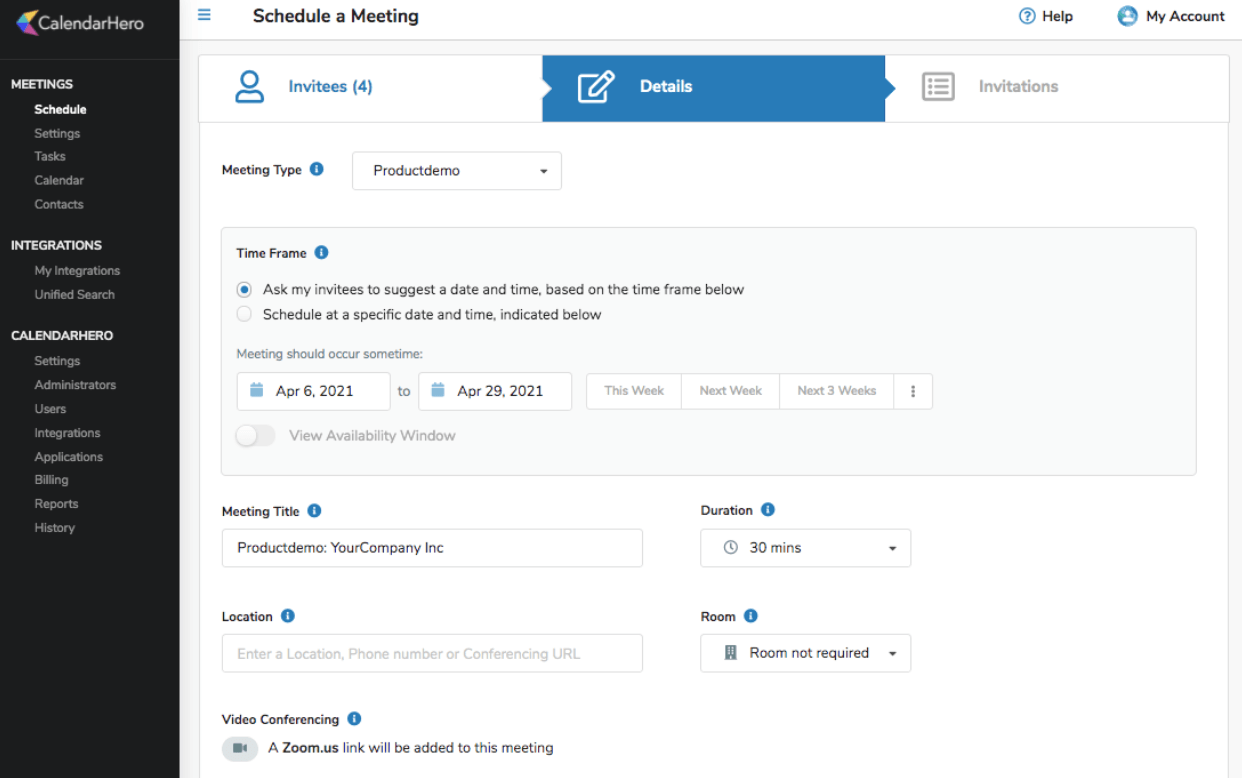- Close more deals (because you’ve done better prospecting, made more cold calls, and spend your time on the best leads)
- Have a higher conversion rate (because you know who to focus on, and you’ve practiced converting them)
- Improve the bottom line (because a weak sales month is a weak business month – and when everyone hits quota, your business thrives)
- Spend the first hour prospecting
- Qualify prospects more effectively
- Treat calls like face to face meetings
- Batch the time you spend responding to email
- Send more precise emails
- Spend more time up-front on research
- Understand your ideal customer profile
- Clean up—or automate—your CRM
- Use automated lead scoring
- Improve sales training and onboarding
- Understand your sales measurement
- Reward jobs well done
- Encourage referrals
- Align sales and marketing
1. Spend the first hour prospecting
If you don’t have enough leads in your book of business, you’re never going to be able to close enough deals. As importantly, you can’t rely on anyone else to get you the leads you need. You need leads. You need the right leads. And you can get them by prospecting, whether that means…- Outbound email
- LinkedIn outreach and research
- Cold calls
“Spend the very first hour on prospecting. There is nothing more important to being productive than creating new opportunities. Productivity in sales is measured in opportunities created and won. Everything else is necessary but not sufficient to generating the outcomes by which productivity in sales is measured.”
If you don’t prospect well, lead velocity will slow down. You’ll waste time on worse leads – and run out of the great leads you need.2. Qualify prospects more effectively
If you’re chasing up weak prospects, you’re going to waste a lot of time on “zombie leads” that never become customers. In your sales strategy, it’s crucial to define what qualifies a lead—from both a marketing and sales perspective. In other words – who should your sales team spend time talking to? If you’ve ever asked “what is the best way to boost sales efficiency” – this is the best way. Stack the deck in your favor by nurturing or filtering leads who aren’t a good fit. Some type of lead scoring or qualification system is crucial. The factors you might use include…- What industry the contact is in
- How big the lead’s organization is
- The annual contract value (ACV)
- Whether the lead has made a contact request
- The specific pain points the lead has given you
- Firmographic information, either collected from the lead or pulled from a data enrichment platform like Clearbit
- Engagement with specific calls to action
- Order page visits
3. Treat calls like face to face meetings
The best sales reps take calls seriously. When you don’t need to actually meet people in person, it’s easy to take a relaxed approach to calls. Colleen Francis of Engage Selling argues that this is a mistake that can hurt sales efficiency: “Treat telephone calls the same way you would a face to face meeting with a client. Block the time in your calendar, put your phone on DND, turn off your email, cell phone and any social media websites, and close your office door. Institutionalizing focus will result in more work done at a much higher quality level.” When you’re on a call, drop everything. Don’t be handling some administrative task on the side. Don’t zone out thinking of lunch. Stay focused on your discovery questions. Focus on your follow-up questions. Be ready to push for the close, or to move the deal along to the next stage of your pipeline.4. Batch the time you spend responding to email
If you spend your time constantly interrupted by replying to emails, you’re never going to get your most important work finished. In The Four Hour Work Week, Tim Ferriss recommends batching your replies into just two times a day (11am and 4pm). If you use email to do prospecting or follow up with leads, this may not be an option for you. But the principle behind the idea can still work. Instead of using email reactively (whenever you get mail), proactively set aside specific times where you’ll be working on email—and focus on other work at other times. Some email can’t be avoided:- You may need to do outreach that can’t be automated (via a tool like oureach.io or Ninja Outreach).
- You may need to follow up on meetings or phone calls (your CRM should be able to send notes, reminders, and tasks for this).
5. Send more precise emails
Common wisdom on emails is that shorter is better. Right? Maybe. In reality, your sales productivity will improve if you focus on sending more precise emails instead of shorter ones. Cal Newport, author of Deep Work, has laid out a three-step process to saving time by sending better emails.- Identify the goal of an email
- Figure out the process that will accomplish that goal
- Explain the process in detail so that everyone understands it
- A few times that work for you
- A suggested location
- A phone number to reach you at (eliminate back and forth)
6. Spend more time up-front on research
Don’t go into a sales call cold. If you’ve gotten to the point where there’s a call or meeting with a prospect, you should be spending at least a few minutes preparing—and ideally would do as much prep as you have time for. Deep understanding of a specific prospect can give you new ideas for how to present your offerings.- What features and benefits should you emphasize?
- What are the concerns that may prevent this specific prospect from converting?
7. Understand your ideal customer profile
Who are your best customers? In sales, you need to know the main drivers of revenue for your business. Focusing on the customers that create the most value for your business is a crucial way to increase sales productivity. If you know more about your best customers, it’s easier to tell where you should be spending most of your sales time8. Clean up—or automate—your CRM
A messy CRM adds unnecessary time to every deal. Every time you need to manually input data or update deals (and remind yourself of how to do those things), you’re wasting time that could be spent on literally anything else. Any of these sound familiar?
Any of these sound familiar?
- Your CRM is messy, so multiple people are working on the same deal – and the hand-off goes poorly
- Sales reps working in the field can’t find the information they need on their phones
- You need to spend time – for every deal – digging through your CRM to find the relevant information
- Notes you take during a call might never be seen by anyone ever again
9. Use automated lead scoring
Lead scoring can help you identify the perfect moment to follow up (and notify at that moment). It helps you answer questions like:- Are you following up at the right time?
- What’s the exact moment a marketing qualified lead become a sales qualified lead?
10. Improve sales training and onboarding
Sales reps should be training throughout their careers. If a training session makes a sales rep 1% more productive, they will do the equivalent of 200 hours of extra work over the course of a year. Now imagine if your whole sales organization was just 1% more efficient – that’s 200 extra hours of work per person. (It’s not just me saying this, by the way. This advice comes from legendary CEO Andy Grove). This is more of an organizational tip than an individual one—but spending time training your team can pay off in your long-term sales productivity. Good onboarding is the first step to a strong sales team, but ongoing training also has value. Every lesson you teach can have a ripple effect throughout your sales force, and your sales. Improve sales techniques; improve sales. On an individual level, practicing and constantly improving can help you as well. If you can improve your skills and convert more, higher value deals faster, your sales productivity is going up—by definition.11. Understand your sales measurement
If you don’t have your sales KPIs ironed out, how do you know if your investment in sales is paying off? Track key metrics so that you can identify weak links in your sales process. If you can find places where deals are slipping through the cracks—where a deal that could be won is instead lost—you can improve your conversion rate and produce better results. Productivity expert Steve Scott of Develop Good Habits makes the point that it’s easy to fall into the trap of just “working harder:”“Many people in the sales force think that working longer and harder will somehow magically equate to more sales. This idea could not be more wrong. Working on too many things at one time, being unclear about goals and not understanding your metrics may have you working hard. But not working effectively.”



